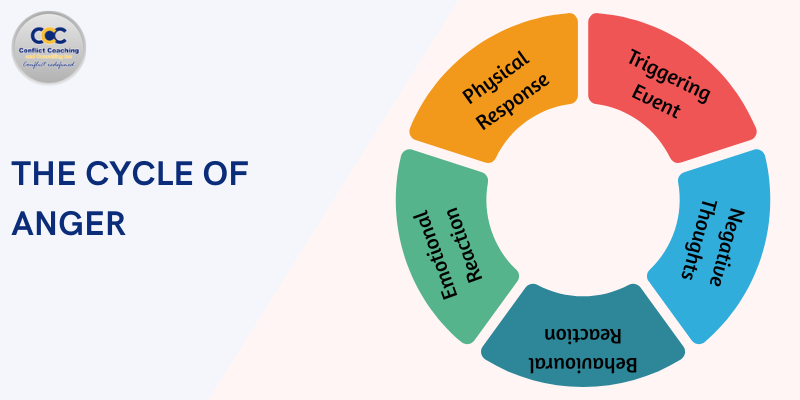
The Cycle of Anger: How to Spot It and Break It Early
Everyone gets angry sometimes. It’s a natural emotion—just like happiness or sadness. But when anger starts to take control, it can hurt your health, your relationships, and even your job.
Many people don’t realize that anger often follows a pattern. This pattern is called the cycle of anger.
The anger cycle helps explain what happens before, during, and after we get angry.
From the moment something upsets us to the way we react, it all follows a path. If we don’t break the cycle, it can keep repeating—making us feel stuck and out of control.
What Is the Anger Cycle?
The anger cycle is a repeated pattern of emotional and physical responses triggered by perceived threats or frustrations.
It unfolds in stages—from a triggering event to emotional and behavioral reactions—and often loops unless we step in to interrupt it.
Anger isn’t just a sudden outburst. It builds gradually: first, a trigger sets it off, then negative thoughts kick in, your body reacts, and eventually, behavior follows.
If this cycle is left unchecked, it tends to repeat, leading to escalating outbursts, emotional fatigue, or even damaged relationships.
According to research, 1 in 10 people struggle to manage their anger, highlighting how common this pattern is.
That’s why therapists often use the anger cycle model in Cognitive Behavioral Therapy (CBT) and anger management classes.
Understanding it is also a powerful tool for self-awareness, helping people recognize early warning signs and respond consciously rather than reactively.
The 4 Stages of the Anger Cycle
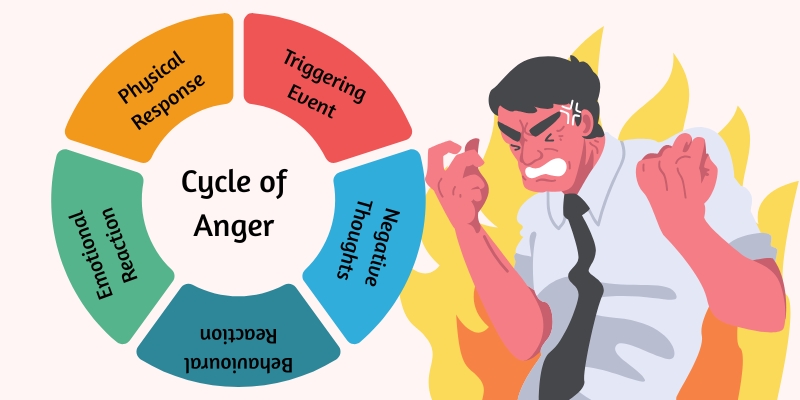
Think of anger like a wheel or a line of falling dominoes—once it starts, each stage pushes the next.
The cycle of anger moves through four key stages: the trigger, your thoughts, your body’s reaction, and your behavior.
If you don’t stop the cycle early, it keeps turning—leading to emotional outbursts, regret, or ongoing stress.
By learning to recognize each stage, you can step in before anger takes over. Let’s break down each part of this cycle to understand how it works and how you can stop it from repeating.
1. Triggering Event
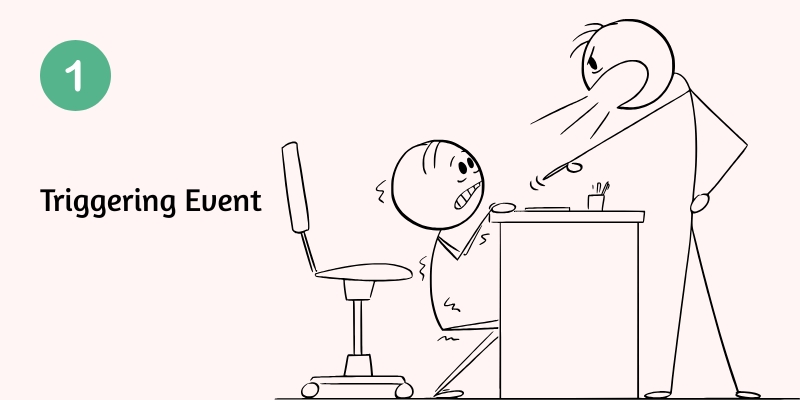
Anger often begins with a specific event. It could be someone cutting you off in traffic, a rude comment from a co-worker, or a broken promise.
These are triggers—moments that spark a feeling of unfairness, disrespect, or danger.
What triggers one person may not bother another. For example, being interrupted may upset you but not someone else.
That’s because everyone has unique emotional triggers, often shaped by past experiences or personal values.
Tip: Start noticing what sets you off the most. If certain triggers happen often—like daily traffic or critical feedback—make a plan for how you’ll respond next time.
2. Negative Thoughts
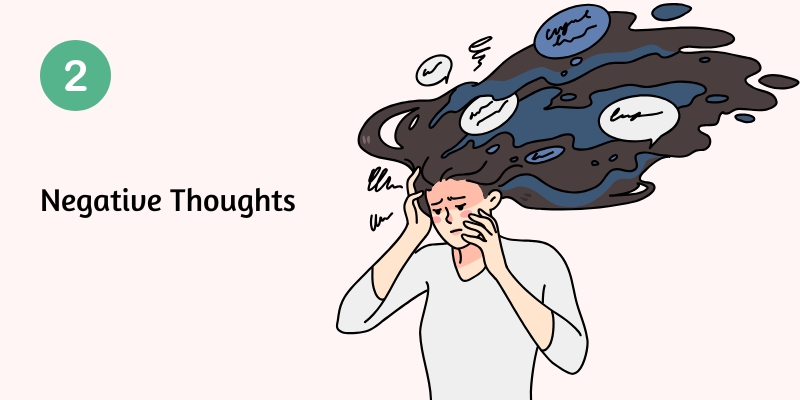
After the trigger, your thoughts kick in. You might think, “They don’t respect me” or “This always happens to me.” These thoughts fuel the fire, often making the situation feel worse than it is.
This stage is where cognitive distortions show up—like mind-reading (“They did it on purpose”) or catastrophizing (“This is a total disaster”). These irrational thoughts make anger grow faster and stronger.
Tip: Try thought reframing or calming self-talk. Instead of thinking, “They’re against me,” you could tell yourself, “Maybe they’re having a bad day.” A small shift in how you think can slow the entire cycle down.
3. Body’s Automatic Response
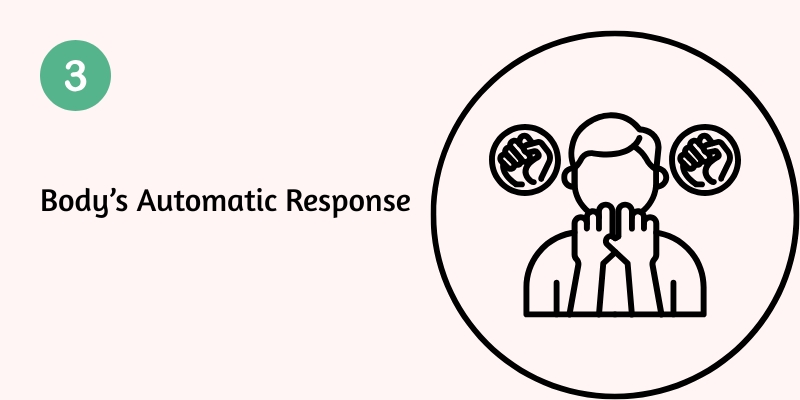
As your thoughts build, your body reacts. The fight-or-flight response kicks in, preparing you for danger—even if there isn’t any real threat. This is controlled by your autonomic nervous system.
You may feel your heart race, fists clench, muscles tighten, or start sweating. These are warning signs—your body’s way of telling you that you’re entering the red zone.
Tip: Think of these signs as your internal smoke alarm. When you feel them, it’s time to use grounding techniques like deep breathing, stretching, or splashing cold water on your face to calm your nervous system.
4. Behavioral Response
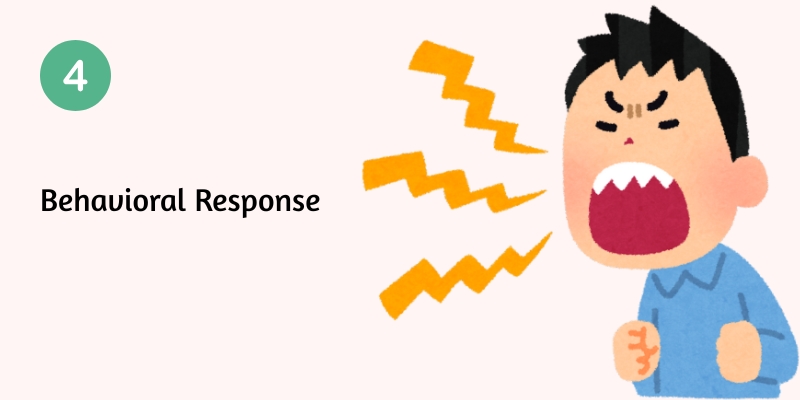
This is where your anger shows up on the outside. You might yell, slam a door, use sarcasm, or shut down completely. These actions may feel like release, but they often lead to guilt, conflict, or even more anger.
The problem? These behaviours often become new triggers for others—starting a fresh anger cycle that keeps the pattern going.
Tip: Choose a constructive coping strategy instead. That could mean taking a walk, counting to ten, journaling, or using assertive communication to express yourself without blowing up.
How to Break the Anger Cycle at Each Stage
Breaking the anger cycle is possible—and the earlier you step in, the easier it is to manage.
Each stage of the cycle offers a unique opportunity to interrupt the pattern and shift toward a calmer, more thoughtful response.
Below is a simple table showing stage-specific strategies that can help you stay in control when angry:
| Stage of Anger Cycle | What Happens | How to Interrupt It |
| Triggering Event | Something upsets or frustrates you | Identify common triggers and plan ahead (e.g., deep breaths, timeout) |
| Negative Thoughts | Irrational or angry thoughts start spiraling | Use thought reframing, journal the facts, or practice self-talk |
| Body’s Response | Physical signs appear: heart rate rises, fists clench | Try breathwork, muscle relaxation, or grounding techniques |
| Behavioral Reaction | Anger is expressed (yelling, sarcasm, withdrawing) | Pause and choose a healthier action (e.g., walk away, speak calmly) |
Conclusion
Anger is a normal, even protective, emotion—it tells us when something feels wrong or unsafe.
But when it goes unchecked, it can turn into a harmful cycle that affects our well-being and relationships.
The good news? You can learn to break the cycle of anger with small, mindful steps.
The goal isn’t to push anger away or pretend it doesn’t exist. Instead, it’s about noticing the signs early, understanding what’s happening inside you, and choosing a better way to respond.
This takes practice, but over time, it builds emotional strength and self-awareness.
Start by tracking your own anger cycle. What triggers you? What thoughts come up? How does your body feel? Choose just one stage and apply a calming strategy that feels right for you!
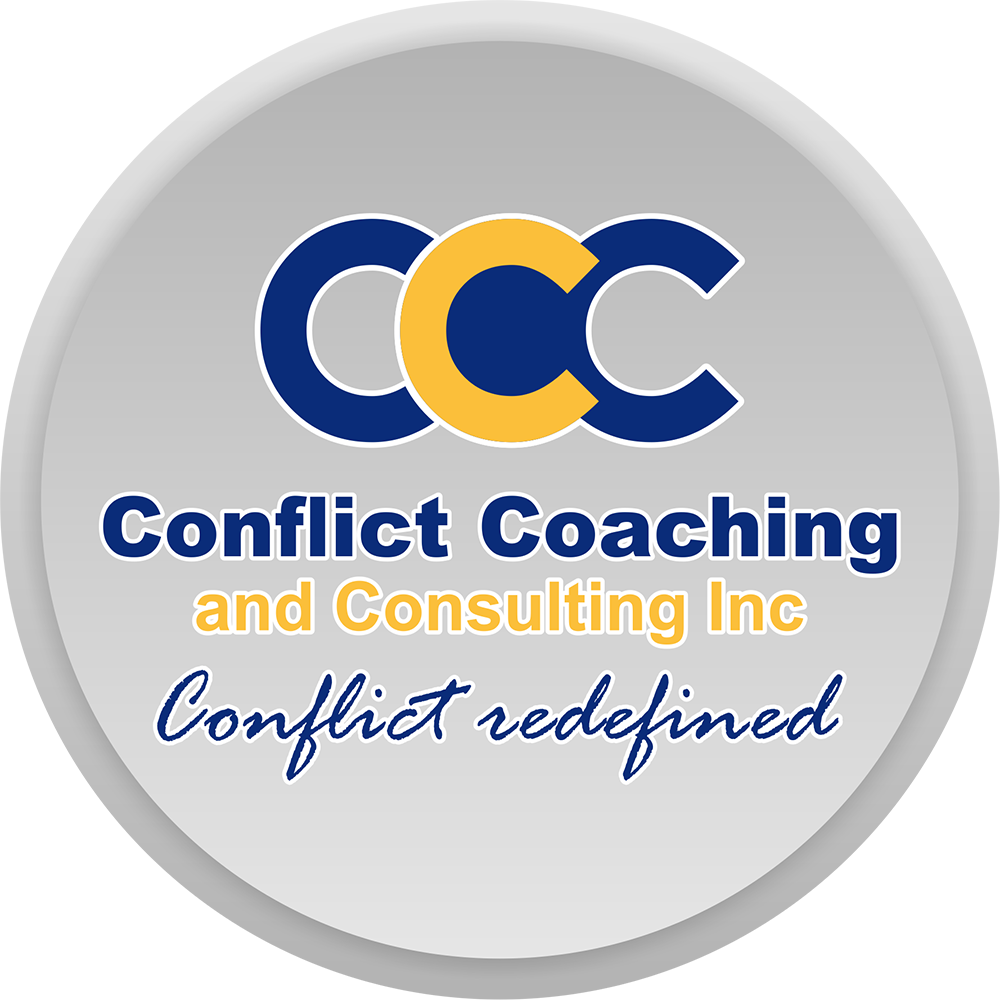
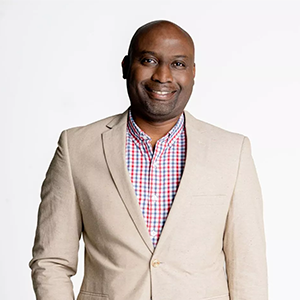
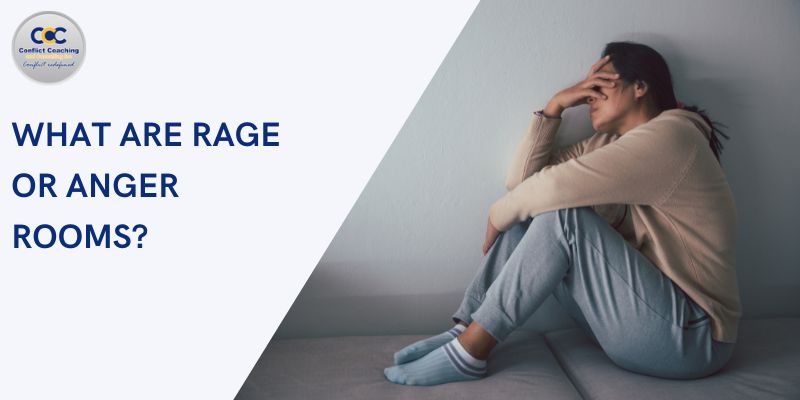
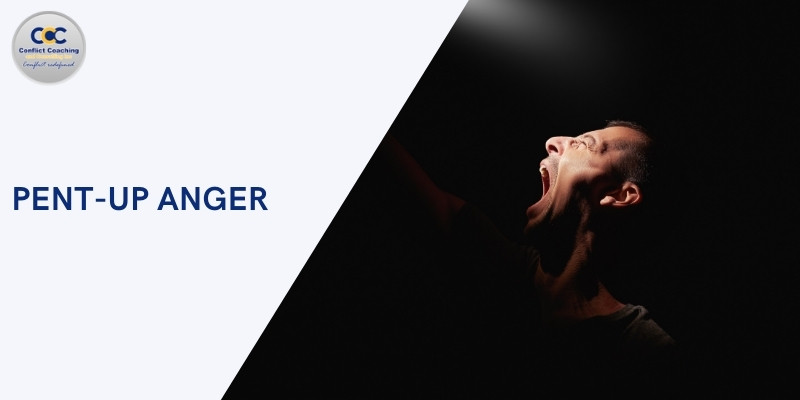
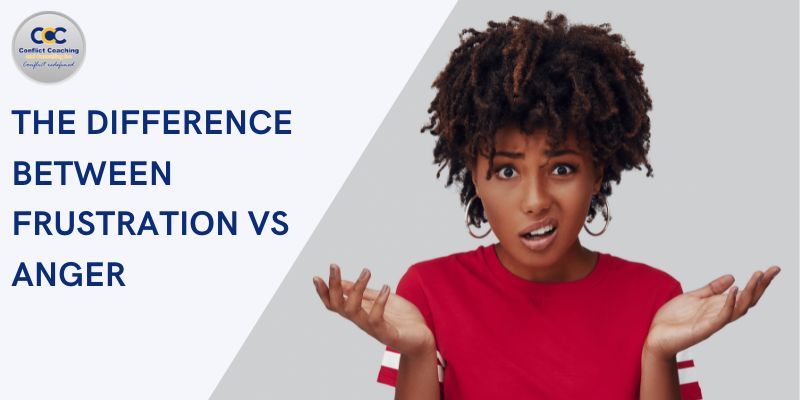
Responses